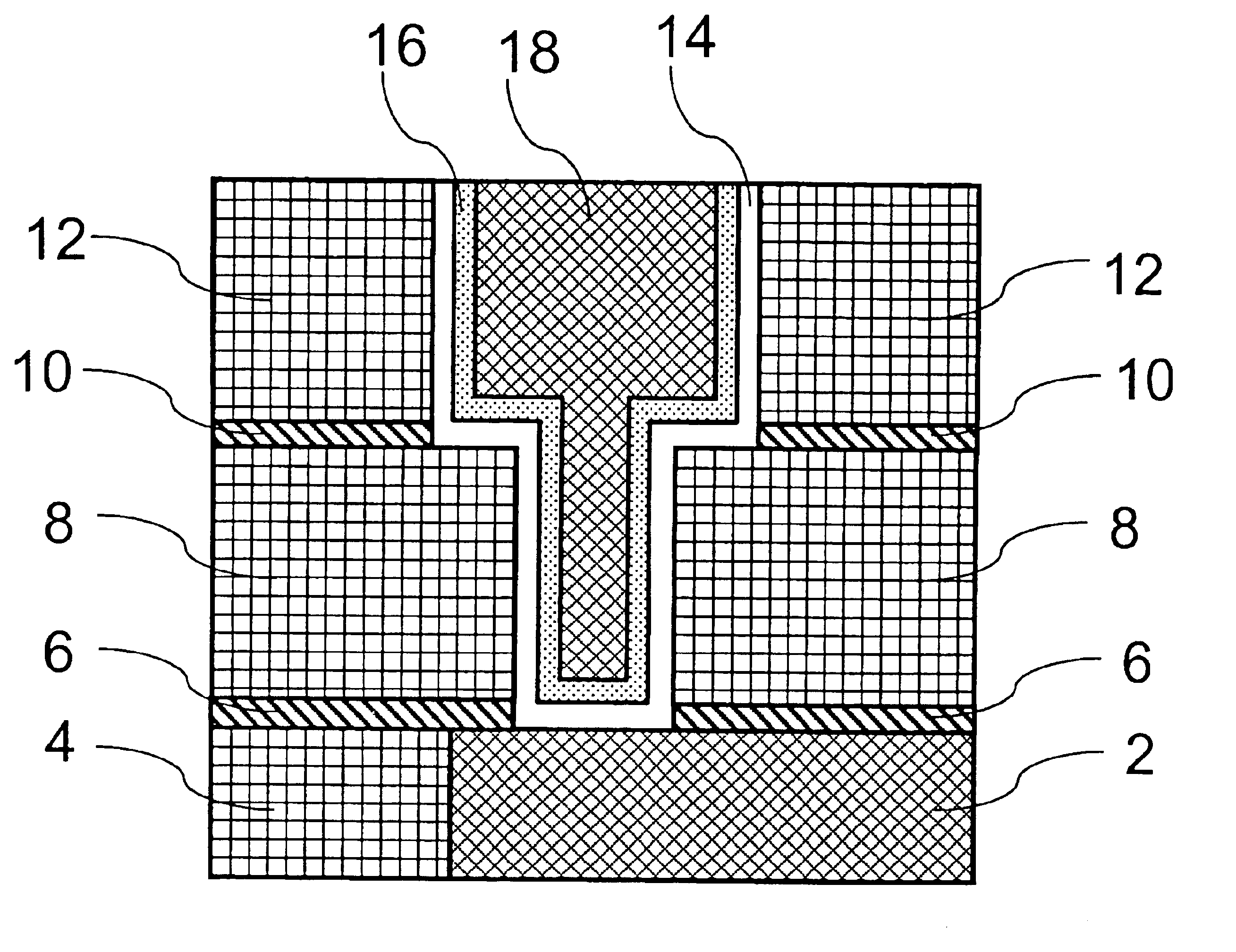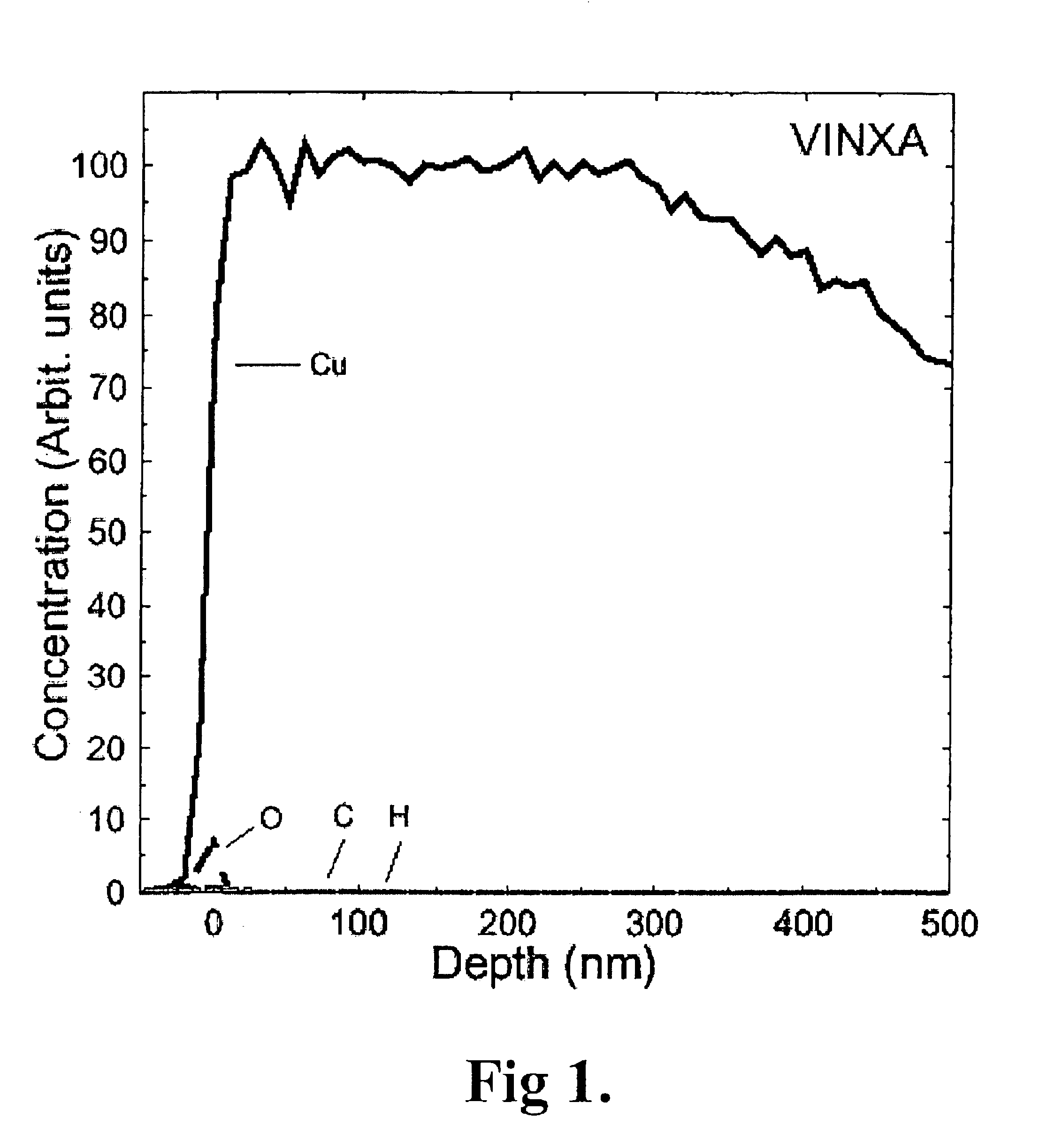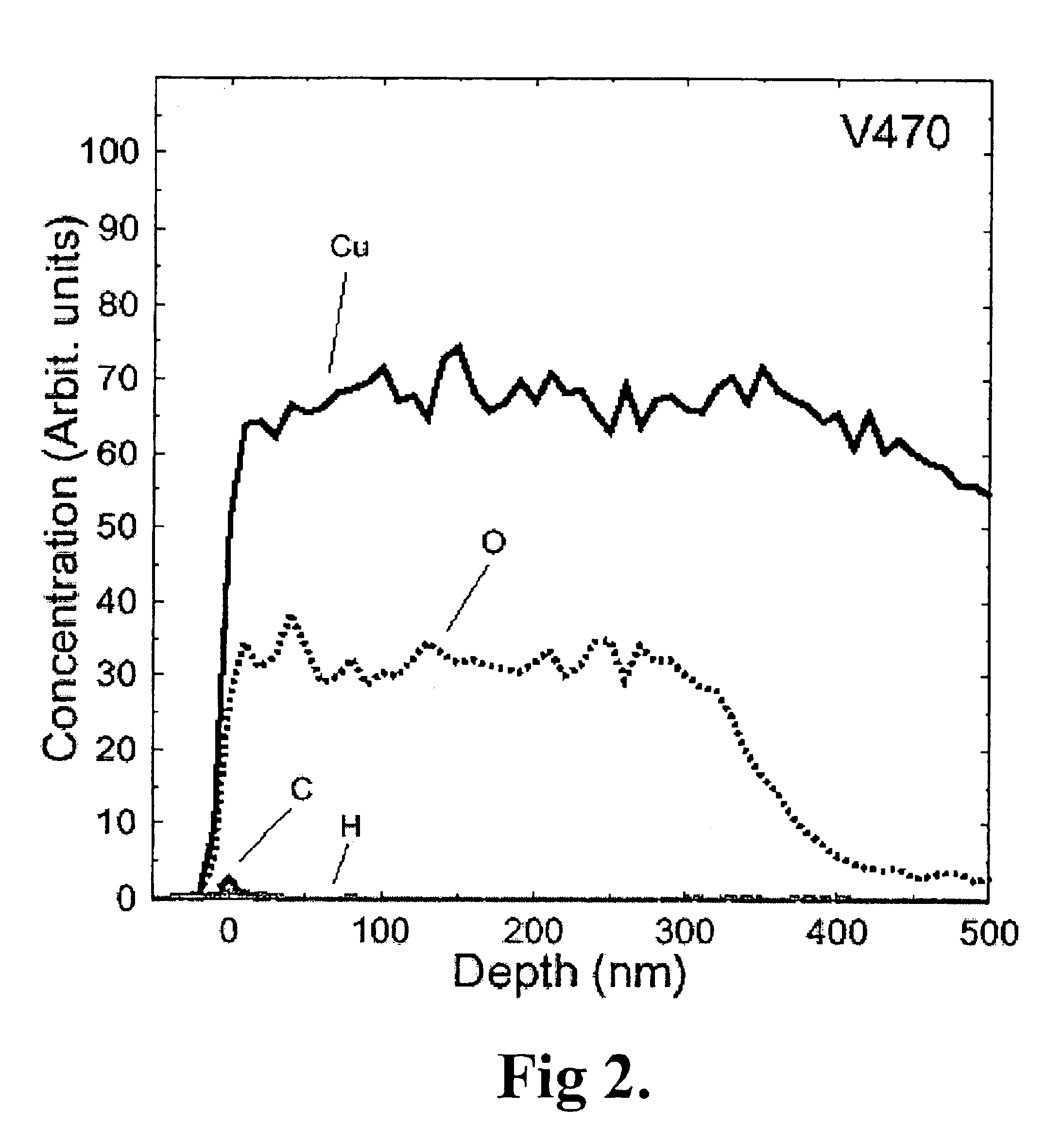Process for producing integrated circuits including reduction using gaseous organic compounds
a gaseous organic compound and integrated circuit technology, applied in the direction of basic electric elements, electrical equipment, semiconductor devices, etc., can solve the problems of not being able to remove an oxide layer from the copper surface, affecting the electrical properties of insulators, and the process of publication cannot be successfully applied to the production of integrated circuits
- Summary
- Abstract
- Description
- Claims
- Application Information
AI Technical Summary
Benefits of technology
Problems solved by technology
Method used
Image
Examples
example 1
Reduction with Methanol Vapour
[0179]A silicon substrate having a copper oxide coating on copper metal was loaded to the reaction chamber of an F-120 ALCVD™ reactor. The reaction chamber was evacuated to vacuum and heated to 250° C., 310° C., 360° C. or 385° C. depending on the experiment. The pressure of the reaction chamber was adjusted to about 5-10 mbar with flowing nitrogen gas.
[0180]Methanol is a liquid having a vapour pressure of 128 mbar at 20° C. Methanol was vaporised from an external source bottle kept at 21° C. Methanol vapour was mixed with nitrogen gas (400 std.cm3 / min, claimed purity 99.9999%). The gas mixture was introduced to the reaction chamber and contacted with the substrate. The reaction time was 300 s. The consumption of methanol was 0.55 g. The reactor was cooled to below 100° C. before unloading the samples to room air.
[0181]It is assumed that methanol is oxidised with copper oxide into formaldehyde and water while copper oxide reduces into copper metal accor...
example 2
Reduction with Ethanol Vapour
[0183]A silicon substrate having a copper oxide coating on copper metal was loaded to the reaction chamber of an F-120 ALCVD™ reactor. The reaction chamber was evacuated to vacuum and heated to 310° C., 360° C. or 385° C. depending on the experiment. The pressure of the reaction chamber was adjusted to about 5-10 mbar with flowing nitrogen gas.
[0184]Ethanol is a liquid having a vapour pressure of 59 mbar at 20° C. Ethanol (grade BA14, claimed purity 99.5%) was vaporised from an external source bottle kept at 21° C. Ethanol vapour was mixed with nitrogen gas (400 std. cm3 / min., claimed purity 99.9999%). The gas mixture was introduced to the reaction chamber and contacted with the substrate. The reaction time was 300 s. The consumption of ethanol was 0.60 g. The reactor was cooled to below 100° C. before unloading the samples to room air.
[0185]As a result, the copper oxide film reduced partially into copper metal at 310° C. The reduction was complete in fi...
example 3
Reduction with 2-propanol Vapour
[0188]A silicon substrate having a copper oxide coating on copper metal was loaded to the reaction chamber of an F-120 ALCVD™ reactor. The reaction chamber was evacuated to vacuum and heated to 310° C., 360° C. or 385° C. depending on the experiment. The pressure of the reaction chamber was adjusted to about 5-10 mbar with flowing nitrogen gas.
[0189]Isopropanol, also known as 2-propanol, is a liquid having a vapour pressure of 43 mbar at 20° C. Isopropanol (Merck VLSI Selectipur) was evaporated from an external liquid source bottle kept at 21° C. Isopropanol vapour was mixed with nitrogen gas (400 std.cm3 / min, claimed purity 99.9999%). The gas mixture was introduced to the reaction chamber and contacted with the substrate. The reaction time was 300 s. The consumption of isopropanol was 0.70 g. The reactor was cooled to below 100° C. before unloading the samples to room air.
[0190]As a result, copper oxide reduced completely into copper metal at 360 and...
PUM
 Login to View More
Login to View More Abstract
Description
Claims
Application Information
 Login to View More
Login to View More - R&D
- Intellectual Property
- Life Sciences
- Materials
- Tech Scout
- Unparalleled Data Quality
- Higher Quality Content
- 60% Fewer Hallucinations
Browse by: Latest US Patents, China's latest patents, Technical Efficacy Thesaurus, Application Domain, Technology Topic, Popular Technical Reports.
© 2025 PatSnap. All rights reserved.Legal|Privacy policy|Modern Slavery Act Transparency Statement|Sitemap|About US| Contact US: help@patsnap.com



